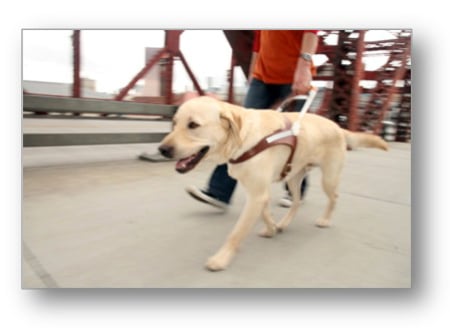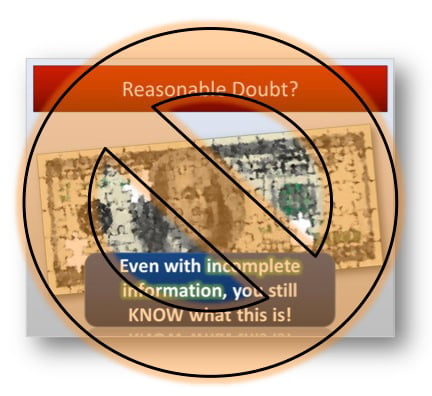by Ryan H. Flax
(Former) Managing Director, Litigation Consulting
A2L Consulting
You must use trial graphics and other demonstrative evidence to be as persuasive as possible and win at trial. But, if you use trial graphics incorrectly, you risk losing everything. Take the recent trial scenario that played out in Orange County, California as an example and a warning.
In The People v. Otero, a criminal prosecution over a sexual assault on a child, in her closing arguments, the prosecutor began to discuss the burden of proof – as we all know, in criminal cases it’s beyond a reasonable doubt. The question is, what does that really mean. The prosecutor wanted to make the point that the burden does not require absolute knowledge – not every fact must be supplied and not every fact supplied need be perfectly accurate to satisfy this burden.
However, the prosecutor took it one step too far.
She used a trial graphic to demonstrate her point. It was similar to a combination of the graphics I’ve supplied above and below. Instead of showing an incomplete puzzle, it showed the state of California, without an identifying label and with some incorrect city locations and names. She began explaining that she wanted to identify the name of a state that looked like the one in the image (the trial was in California, by the way) and even though there was some incorrect or incomplete information, she knew the state was California. Well, the defense jumped right up and objected to that trial graphic.
 The court sustained the objection and instructed the trial graphic be taken down and not referred to again. Then the judge instructed the jury to disregard the trial graphic and the discussion thereof. The trial and closing arguments continued and ultimately, the jury found the defendant guilty.
The court sustained the objection and instructed the trial graphic be taken down and not referred to again. Then the judge instructed the jury to disregard the trial graphic and the discussion thereof. The trial and closing arguments continued and ultimately, the jury found the defendant guilty.
On appeal, the defense argued that the prosecutor’s little stunt with the map of California amounted to misconduct warranting reversal of the conviction. The Court of Appeal agreed that the trial graphic and argument was misconduct, but that it was harmless because it was taken down so quickly and because the strong evidence for conviction in the case.
The court explained the problem: the prosecutor was misstating the law relating to its burden of proof. The beyond a reasonable doubt burden is not quantitative – it’s not based on a certain number of puzzle pieces of evidence fitting together. So, it’s misconduct for the attorney to present it that way. It’s misconduct to tell the jury that if they have “X” number of puzzle pieces they should convict. So, although its always very tempting to make a graphic like this because the subject matter simply lends itself to visuals, you need to take a step back and decide just how to make this point visually and appropriately.
I don’t know for sure, but I imagine that the prosecutor’s path to this misconduct went something like this: “Hey, I’ve got a great idea!” And, if the law didn’t matter, she certainly did have a good idea. Make your case using trial graphics. Explain to the jurors that it’s okay to convict this guy even though you don’t feel 100% positive of his guilt (he admitted to the crime by the way). What this attorney was missing was someone by her side to say, “hold on a minute, you can’t do that” or “let’s rethink this before committing to this strategy.”
 This is where a litigation consultant is invaluable. No matter how many trials you’ve been through as an attorney, we’ve seen more as consultants (we’re attorneys, too, by the way). Our specialty is how to get your “persuasion on” and how to do it the right way. A good litigation consultant is someone to bounce these ideas off of and work through the way to graphically make your case and how to stay inside the lines.
This is where a litigation consultant is invaluable. No matter how many trials you’ve been through as an attorney, we’ve seen more as consultants (we’re attorneys, too, by the way). Our specialty is how to get your “persuasion on” and how to do it the right way. A good litigation consultant is someone to bounce these ideas off of and work through the way to graphically make your case and how to stay inside the lines.
Other resources related to trial graphics on the A2L Consulting site:







Leave a Comment